AIRCRAFT
F-4J Phantom II VF-96 Fighting Falcons
SCALE & KIT
1/48 Super Wing Series
MODELER
Dawid Branski
HISTORY
The F-4J was the final version of the Phantom to be placed in production for the US Navy and US Marine Corps. It was designed as the follow-on to the original Navy F-4B, correcting some of the deficiencies which had become apparent in service.
There were three YF-4Js, all of them converted from existing F-4B airframes (BuNos 151473, 151496, and 151497). The first YF-4J flew on June 4, 1965. The first production F-4J flew on May 27, 1966.
A total of 522 F-4Js were built for the Navy and Marine Corps between December of 1966 and January of 1972. The F-4J was powered by a pair of J79-GE-10 engines, rated at an afterburning thrust of 17,900 pounds each. These engines were externally distinguishable by their longer afterburner “turkey feathers”. Because of the increased weight and the more demanding sink rate requirements, the F-4J was fitted with a beefed-up landing gear with larger mainwheels. In order to accommodate these larger mainwheels, the upper and lower surfaces of the inner wing had to be bulged outward like those on the USAF F-4C. An additional fuel cell was fitted in the rear fuselage to bring internal fuel capacity to 1998 gallons. However, the number 1 fuel cell was slightly reduced in size to accommodate the computer and other electronics.
Even though the Navy wanted better takeoff and landing performance for the Phantom, it nevertheless felt that speed, climb, and range requirements ruled out the use of the high-drag slatted wing that was used by the Air Force on the F-4E. In the pursuit of better takeoff and landing performance, McDonnell decided instead to add a slot to the stabilator leading edge, effectively turning it into a miniature inverted slatted wing. This slotted stabilator provided a tremendous downward force at low speeds, which allowed a large leading edge down deflection without stalling. The effectiveness of the slotted stabilator was markedly improved by locking the inboard leading flap in the up position.
The F-4J introduced 16.5-degree drooped ailerons, which is a fancy way of saying that with gear and flaps down, a downward deflection of 16.5 degrees became the “neutral” aileron deflection.
As a result of all these aerodynamic innovations, the approach speed was reduced from 157 mph to 144mph.
The F-4J was equipped with the AN/AJB-7 bombing system which provided substantially better ground attack capability over that of the F-4B. It had the capability for all-altitude release of nuclear weapons at various angles on a timed basis from the target or offset. In addition, it had the capability of working with the Bullpup air-to-surface missile. The F-4J was also equipped with the AN/AWG-10 fire control system housed in an enlarged radome. This set used an AN/APG-59 pulse-Doppler radar in place of the earlier APQ-72. This new radar was designed to detect and track low-lying aircraft and to distinguish them from sea/ground returns. The F-4J was fitted with the AN/ASW-25 one-way datalink which made automatic carrier landings possible. The infrared search and tracking pod underneath the nose of the F-4B was finally removed.
Other improvements were added during the course of production. From 1969, Sidewinder Expanded Acquisition Mode (SEAM) was provided. This involved new wiring and the fitting of other items designed to make full use of upgraded Sidewinder missiles. The Visual Target Acquisition System (VTAS) helmet sight was fitted to Blocks 45 and 46 F-4Js, and was later retrofitted to most earlier aircraft. Also retrofitted was the Sanders AN/ALQ-126 electronics countermeasures set with prominent slender fore and aft canoe-shaped fairing antennae mounted on the upper intakes. A hemispheric dielectric antenna was mounted at the leading edge of the canoe. Two more antennae were added below the engine intakes. AN AN/AYK-14 dogfight computer was added, and AN/APX-76 or -89 IFF equipment was also provided. An AN/APR-32 radar warning set was fitted, with antennae mounted in the fin-cap trailing edge and in a box underneath the nose. Reduced smoke J79-GE-10B engines were also retrofitted.
VF-96
Fighter Squadron 96, or VF-96 Fighting Falcons was an aviation unit of the United States Navy in service from 1962 to 1975. When assigned to Carrier Air Wing Nine (CVW-9) their tailcode was NG, and their radio callsign was Showtime. Originally established as United States Naval Reserve squadron VF-791 Fighting Falcons on 20 July 1950 it was redesignated VF-142 after becoming a regular squadron on 4 February 1953. It was re-designated VF-96 on 1 June 1962 and disestablished on 1 December 1975.
PHOTO GALLERY
PHOTO GALLERY 2
Modeler: Nat’s Modeling Showcase
PHOTO GALLERY 3
MODEL KIT
Buy Mcdonnell Douglas F-4J Phantom II -Plastic Model Kit at Amazon
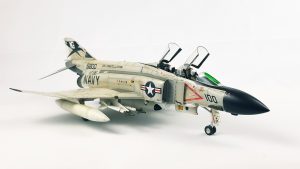
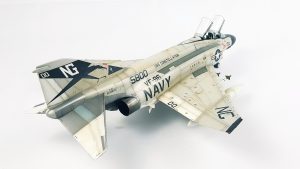
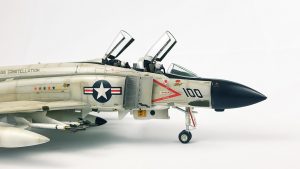
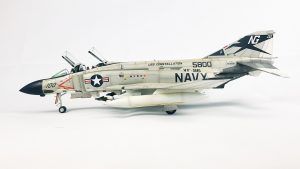
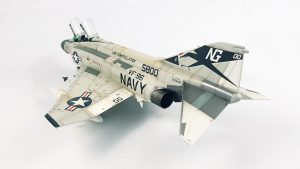
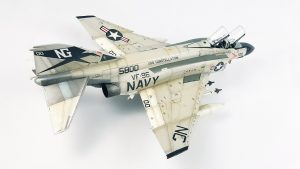
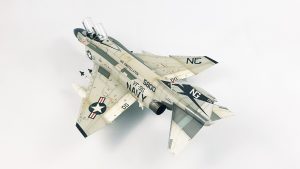
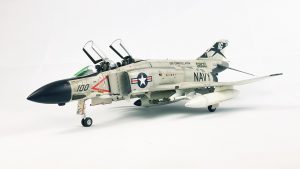
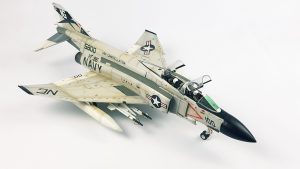
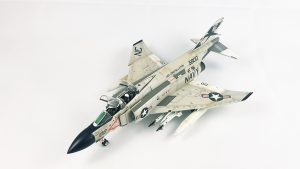
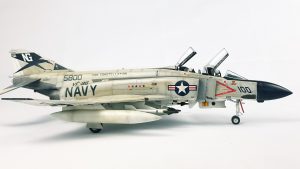
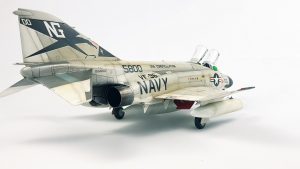
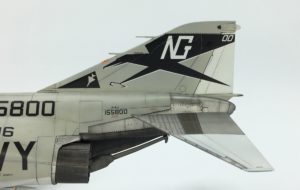
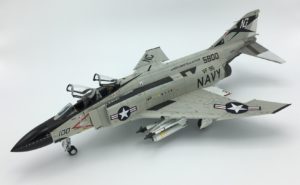
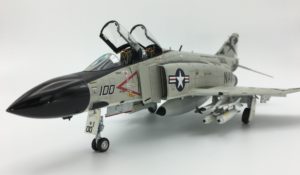
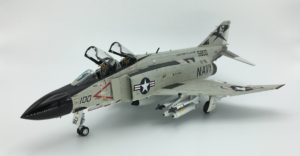
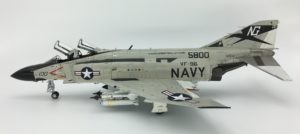
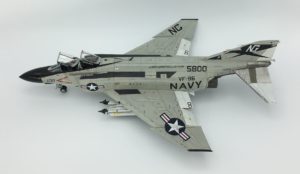
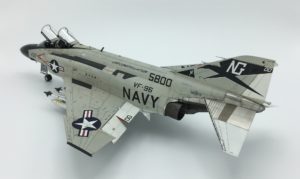
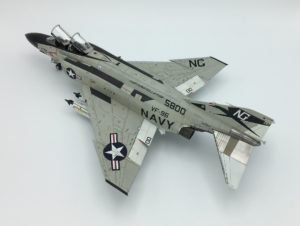
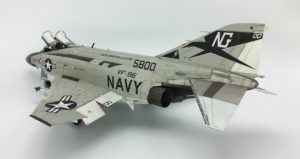
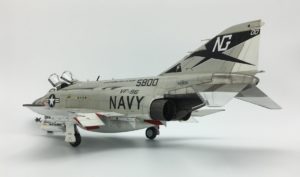
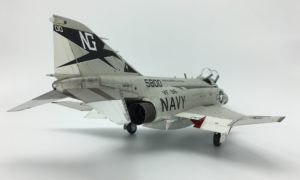
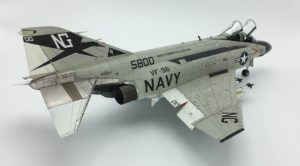
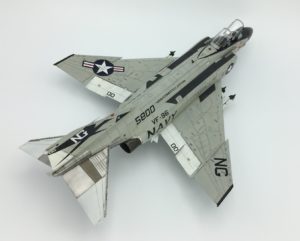
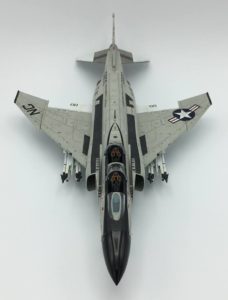
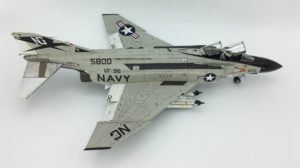
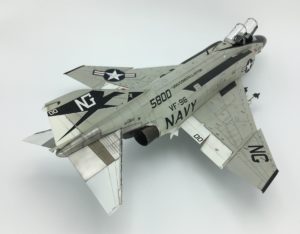
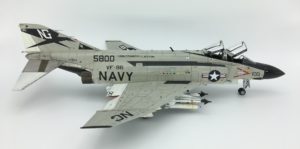
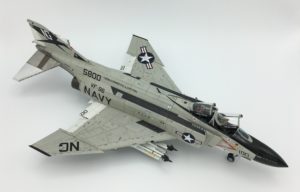
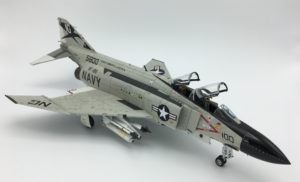
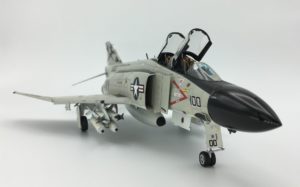
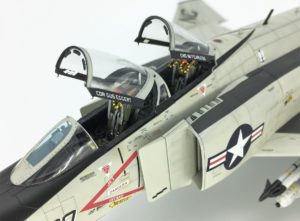
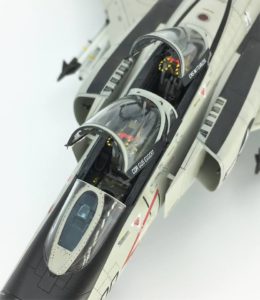
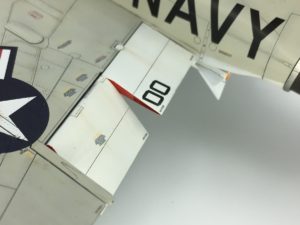
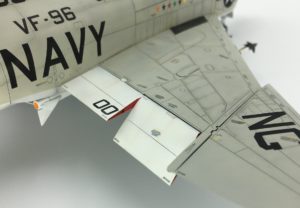
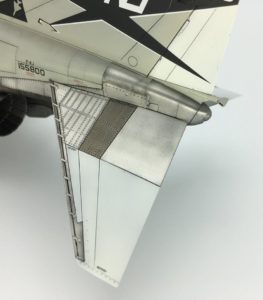
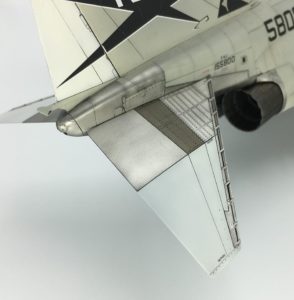
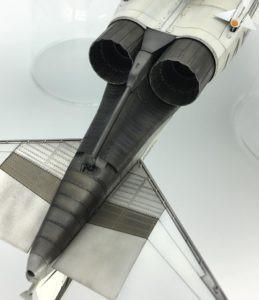
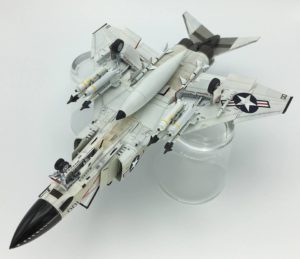
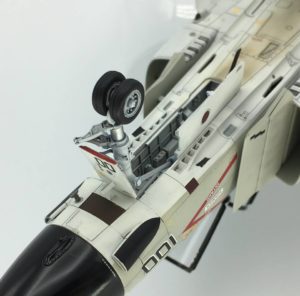
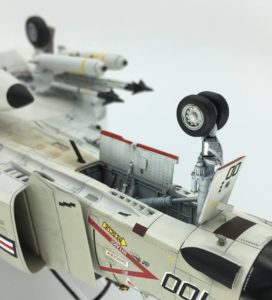
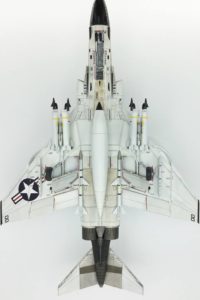
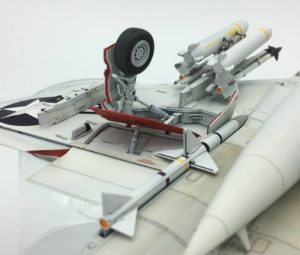
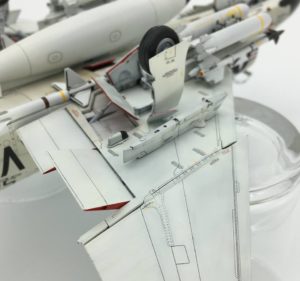
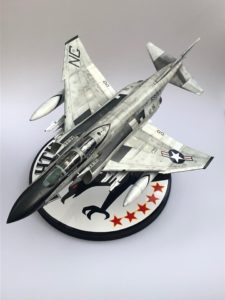
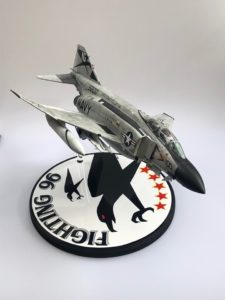
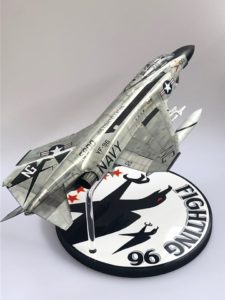
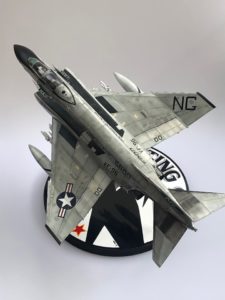
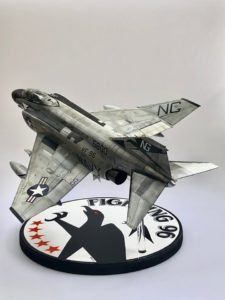
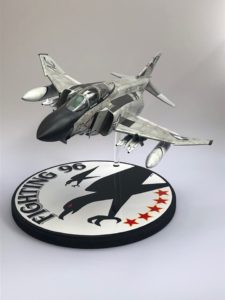
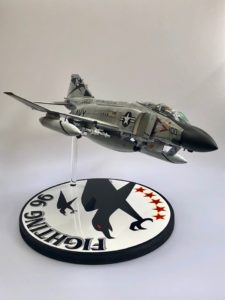
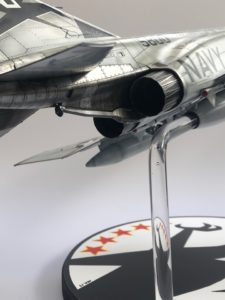
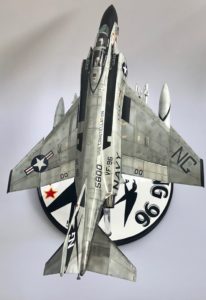
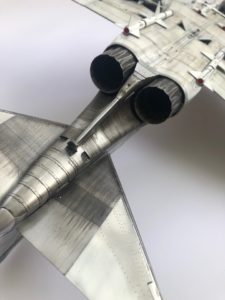
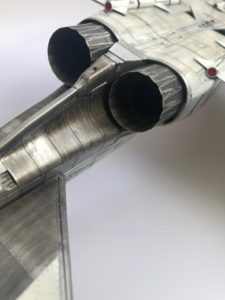
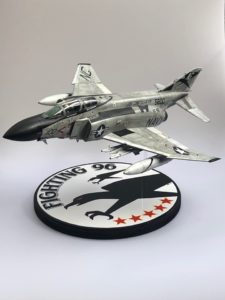
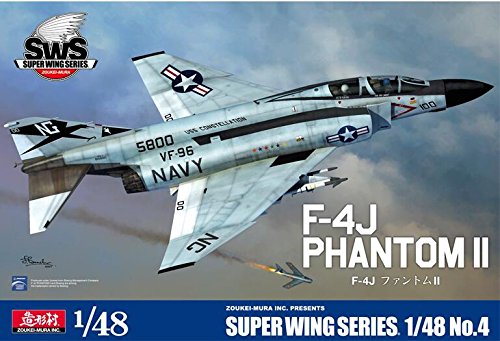
Leave a Reply